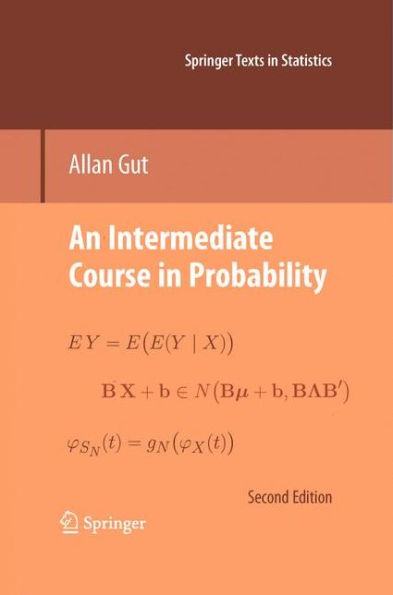An Intermediate Course in Probability
The purpose of this book is to provide the reader with a solid background and understanding of the basic results and methods in probability theory before entering into more advanced courses (in probability and/or statistics). The presentation is fairly thorough and detailed with many solved examples. Several examples are solved with di erent methods in order to illustrate their di erent levels of sophistication, their pros, and their cons. The motivation for this style of exposition is that experience has proved that the hard part in courses of this kind usually is the application of the results and methods; to know how, when, and where to apply what; and then, technically, to solve a given problem once one knows how to proceed. Exercises are spread out along the way, and every chapter ends with a large selection of problems. Chapters 1 through 6 focus on some central areas of what might be called pure probability theory: multivariate random variables, conditioning, tra- forms, order variables, the multivariate normal distribution, and convergence.
1100527772
An Intermediate Course in Probability
The purpose of this book is to provide the reader with a solid background and understanding of the basic results and methods in probability theory before entering into more advanced courses (in probability and/or statistics). The presentation is fairly thorough and detailed with many solved examples. Several examples are solved with di erent methods in order to illustrate their di erent levels of sophistication, their pros, and their cons. The motivation for this style of exposition is that experience has proved that the hard part in courses of this kind usually is the application of the results and methods; to know how, when, and where to apply what; and then, technically, to solve a given problem once one knows how to proceed. Exercises are spread out along the way, and every chapter ends with a large selection of problems. Chapters 1 through 6 focus on some central areas of what might be called pure probability theory: multivariate random variables, conditioning, tra- forms, order variables, the multivariate normal distribution, and convergence.
99.99
In Stock
5
1

An Intermediate Course in Probability
303
An Intermediate Course in Probability
303Hardcover(2nd ed. 2009)
$99.99
99.99
In Stock

Product Details
| ISBN-13: | 9781441901613 |
|---|---|
| Publisher: | Springer New York |
| Publication date: | 06/23/2009 |
| Series: | Springer Texts in Statistics |
| Edition description: | 2nd ed. 2009 |
| Pages: | 303 |
| Product dimensions: | 6.10(w) x 9.25(h) x 0.03(d) |
From the B&N Reads Blog
